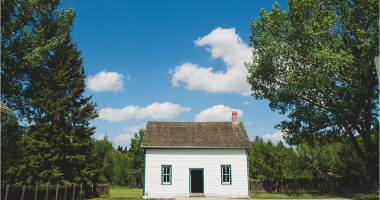Indirect lighting, such as that created by valances, is achieved by bouncing light off of objects like walls and ceilings. This technique is widely used by lighting experts because it effectively lessens both glare and shadows. Light fixtures in buildings often serve to illuminate a space with a soft, even glow.
Light from valances can be reflected in both vertical and horizontal planes using a horizontal shield made of wood, metal, or glass that is hung high up on the wall or right above a window.
Valance lighting looks beautiful in the living room, bedroom, and kitchen. You may want to lower the valance for certain lighting needs, such as when reading in bed. Here, we explore some of the best ways to integrate valance lighting into your home and office space.
1. Integrate valance lighting into your custom designs
Coves, soffits, and valances are all examples of architecturally integrated lighting, which is typically constructed to order by fusing cabinetry or trim with simple light fixtures.
Coves direct light upwards, soffits downwards, and valance lighting directs both ways. Linear fluorescent bulbs (or tubes), lamp holders, and ballasts are the standard components of architectural lighting fixtures. Reflectors are used in some architecturally integrated lighting installations to boost output.
A light bulb shield can be made of metal, wood, or some other material to conceal the bulbs from view. Louvers, diffusers, and baffles can be added as accessories to control the light’s trajectory and soften its intensity.
Soft, diffuse ambient light is provided by valance lighting, which may require additional task lighting. They don’t stick out like a sore thumb and can be seamlessly integrated into any decor.
2. Create warmth in minimalist spaces
In rooms with white or light-colored walls and ceilings, valance lighting will look best. Lights visible from typical viewing angles should have baffles, louvres, or diffusers installed to reduce glare.
To achieve maximum reflectivity, white paint should be used on the interior surface of shielding boards in custom designed fixtures. Spread the light from the bulbs inside the architectural fixtures you made on site.
Lighting experts recommend placing linear or compact fluorescent bulbs so that their ends overlap slightly to prevent dark spots. If using two parallel rows of linear fluorescent lights, stagger the bulb ends.
3. Create valance light coves for a dramatic effect
Coves use the ceiling as a reflector to spread light across a room in a roundabout way. Rooms with vaulted or cathedral ceilings, as well as those with low ceilings (such as basements), might benefit from the addition of coves to make the area feel more open.
Coves can be used to draw attention to the architectural details of a ceiling. The ceiling shouldn’t get too hot or too light, so keep the cove’s apex at least 18 inches from the ceiling and the cove’s apron at least 6 feet, 8 inches from the floor.
Simple fluorescent lamp holders can be put on top of cabinets in kitchens when there is no soffit enclosure above the upper wall cabinets.
This supplies overall kitchen illumination and can be enhanced with under-cabinet or other work lighting as needed. The lamp should be concealed from view behind the cove shielding board, lighting the ceiling directly while reducing glare.
Jessica is engaged in brand exposure at LandscapeInsight. She brings forth content that helps both the reader and brands based on research and trends. You can reach Jessica at –[email protected] or on Our website Contact Us Page.








